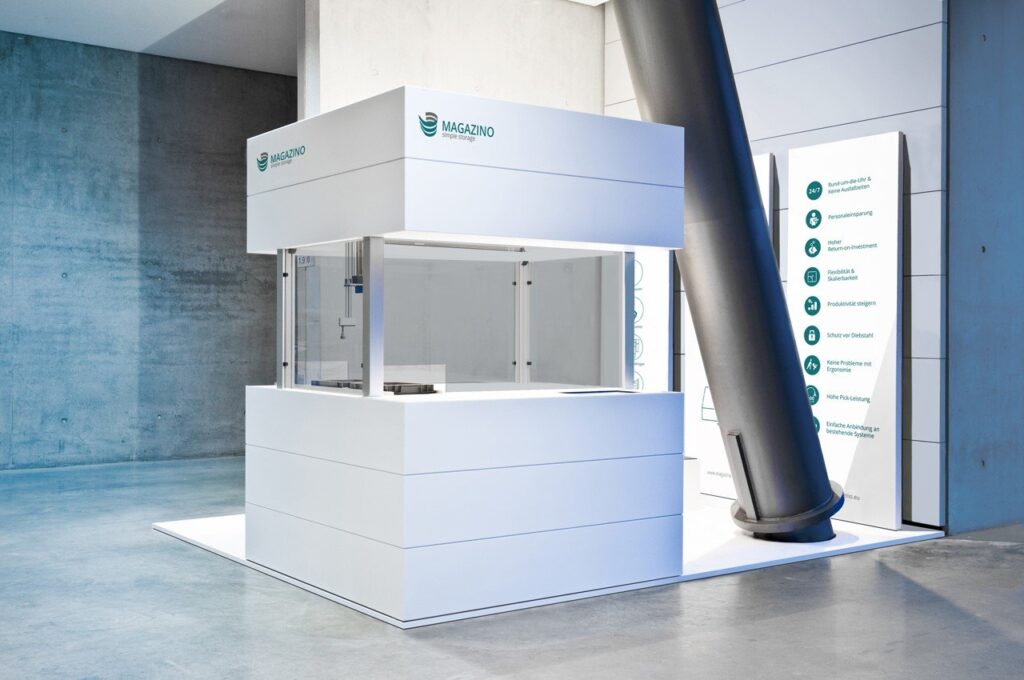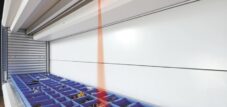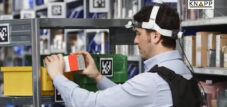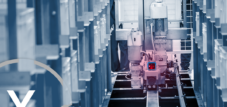Pick by robot
Language selection 📢
Published on: April 28, 2015 / update from: November 26, 2018 - Author: Konrad Wolfenstein
Human-robot collaboration: the first step towards a deserted warehouse?
Industry 4.0 is one of the big buzzwords at this year's leading industrial trade fair in Hanover, and the halls are actually lined with stands from providers whose business area is the creation of solutions for digital networking in industry and production as well as future collaboration between humans and machines have chosen. The more efficiently and flexibly this is interlinked, the more productive companies can be.
Use in production
Since the use of intelligent machine systems is becoming increasingly popular, the so-called human-robot collaboration (MRK) is particularly important. No wonder that the security aspect is of particular importance here; Machine and people often work side by side. The Swiss company ABB robot Yumi for the first time at the trade fair , whereby the name for “You and Me” (roughly: we work together) is supposed to be expressed. The device is a collaborative assembly system, which is equipped with two grabs including touch -sensitive sensors, a precise vision system and a number of integrated security components. It was primarily developed in order to be able to react to the fast and changing manufacturing requirements in the electronics industry and the small parts production as a whole, whereby the robot will gradually be used in other industries. The main focus of the design is the security aspect to enable the desired close interaction. In addition, the system communicates with its human colleagues, for example by pointing them out to errors.
At the trade fair, YuMi is a system from many manufacturers who are committed to the goal of refining the MRK. Close cooperation between people and machines makes sense not only in industrial production when it comes to increasing productivity and profitability.
MRK in intralogistics
The introduction of robots also makes sense in intralogistics, which is still relatively labor-intensive despite advancing automation. Although automated high-bay and carousel warehouses or warehouse paternosters are becoming increasingly sophisticated and efficient, classic solutions with shelving are still the predominant solution in many places. Cost-effective and flexible to use, they do indeed have their advantages, especially when it comes to a very wide range of items that need to be kept in stock. In this solution, human labor is now the driving cost factor alongside energy costs. No wonder that more and more companies are looking for ways to reduce the amount of human effort in these warehouse solutions. Amazon's Kiva robot system , in which the shelves are moved directly to the picking stations by mobile units, is just one solution of many.
In addition, the companies Kuka and Swisslog presented a combined human-robot workstation for picking goods at the trade fair. under the term Automated Item Pick , in which the available order containers are filled simultaneously by the warehouse worker and a robot gripper arm, without the need for a demarcation or even a fence between man and machine. The gripper arm identifies the objects using sensors and image processing technology.
Picking robots take over the work of warehouse workers
And where a warehouse worker normally waits to prepare the delivered items for dispatch, another robot developed by Magazino be used. This, Kado , corresponds to a picking station, which means that it accepts the delivered goods using a scanner and camera, identifies them and then picks them and prepares them for shipping or the next production stage. Due to their design, the robots cannot yet grasp all objects. This applies, for example, to soft items such as shirts or dresses that cannot be grasped by the suction arms. However, it is foreseeable that the manufacturer or supplier will also find a solution for this in the near future.
The system developed by Magazino enables the use of robots to be gradually expanded. So you can start with one device and, if successful, gradually increase Torus and the Kados
The combined use of both devices could make it possible in the future to manage a conventional shelving warehouse without any human labor. In addition to reduced wage costs, this means, above all, an enormous increase in operating hours; The robot system is ready for use around the clock, seven days a week.
But the use of electronic helpers doesn't just make sense for shelving units: automatic small parts warehouses, shuttle systems or paternoster warehouses can also benefit from the use of the picking station. Even with these automated provisioning systems, the Kado integrated at the removal opening instead of the usual packing station - i.e. exactly where the warehouse worker previously stands. This solution also enables man-free management of the warehouse, which, in addition to the advantages already mentioned above, also leads to a reduction in energy costs, as the halls no longer need to be lit or heated to the same extent. It is therefore not surprising that the use of such a robot and storage device combination will lead to a significant increase in productivity, which can quickly amortize the additional purchase costs. Together with the greater flexibility and shorter throughput times in the warehouse, this makes the package an interesting alternative to conventional intralogistics solutions.
Therefore, from an economic perspective, there is hardly anything standing in the way of the widespread introduction of pick-by-robot systems and deserted warehouses. Especially since it is foreseeable that the prices for warehouse logistics companies will tend to move downwards due to both the increasing number of manufacturers operating in this area and the higher number of robots produced.

























